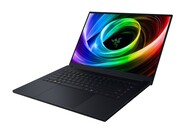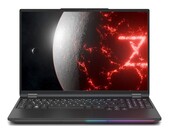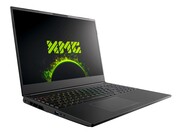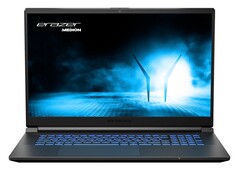
Unreal Engine 5's finest hour? The Outer Worlds 2 review
An action RPG with guaranteed laughs.
The role-playing veterans at Obsidian Entertainment are back with the sequel to their space epic, The Outer Worlds 2. Beyond its signature humor, the game also impresses with its visuals and gameplay. Read on to see how well Unreal Engine 5 performs in our test.Florian Glaser, 👁 Florian Glaser, ✓ (translated by DeepL / Ninh Duy) Published 🇩🇪 🇫🇷 ...
Verdict - A successful and funny RPG with stunning visuals
Epic’s Unreal Engine 5 has taken quite a few hits to its reputation lately. Despite its immense technical potential, it’s often criticized for poor performance and various issues, with Epic and game developers frequently pointing fingers at each other. To get straight to the point: while The Outer Worlds 2 can be demanding at times and comes with a few quirks, players won’t face a technical disaster on the level of Borderlands 4.
During our play sessions, the game left a solid to very positive impression - thanks to its character system, presentation, mission design with multiple approaches, and a visual style that evokes fond memories of the Bioshock series series. The Outer Worlds 2 doesn’t neglect the funny bone either, delivering plenty of laughs along the way. It’s no surprise the action RPG has received strong praise from both critics and players.
Technology, settings & benchmark
Visually, the RPG leaves little room for criticism. While the characters’ facial animations could use some improvement, the overall presentation is highly appealing. Environments are richly detailed and feature crisp textures, while the expansive draw distance and visual effects are equally impressive. Even on low settings, The Outer Worlds 2 maintains its distinctive and stylish look.
Performance, however, isn’t entirely flawless. As with many other Unreal Engine 5 titles, the game occasionally suffers from noticeable stuttering - regardless of the hardware - and sometimes needs a few seconds to “settle in” after loading. Shader compilation also occurs before startup, which can take several minutes on lower-end systems.
The graphics menu in the PC version is impressively extensive, which will delight performance tweakers and visual enthusiasts alike. The Outer Worlds 2 comes packed with modern features, including upscaling options such as TSR, XeSS, FSR, and DLSS - with Multi-Frame Generation supported on compatible GPUs. Hardware-based ray tracing is also available as an optional feature. Several presets allow players to adjust all settings within the “Graphics” section easily, and changes take effect instantly without requiring a restart.
Since The Outer Worlds 2 doesn’t include a built-in benchmark, we used an in-game sequence to measure performance - specifically the mission “A Cause Worth Killing For,” which takes place at Horizon Point Station. As shown in the video below, we sprinted with the main character along a fixed route for just under 30 seconds. Frame rates were recorded using the CapFrameX tool.
Results
FHD / 1,920 x 1,080
At a resolution of 1,920 × 1,080 pixels, the game’s graphics demands remain fairly reasonable. A GeForce RTX 5050 Laptop GPU can handle high settings at around 60 FPS, though the Very High preset pushes it a bit too far. For that level of performance, you’ll need an upper-class or entry-level high-end graphics card.
| The Outer Worlds 2 | |
| 1920x1080 Low Preset 1920x1080 Medium Preset AA:T 1920x1080 High Preset AA:T 1920x1080 Very High Preset AA:T | |
| NVIDIA GeForce RTX 4080, i9-13900K | |
| NVIDIA GeForce RTX 5090 Laptop, Ryzen AI 9 HX 370 | |
| NVIDIA GeForce RTX 5080 Laptop, Ultra 9 275HX | |
| NVIDIA GeForce RTX 5050 Laptop, R5 240 | |
QHD / 2,560 x 1,440 (+ upscaling)
A mixture of 2,560 x 1,440 pixels and maximum settings is possible from an GeForce RTX 5080 laptop is quite playable. Interesting: As long as you only use upscaling, a nice performance boost can be observed (with the GeForce RTX 5090 laptop for example, from 53 to 77 FPS with DLSS Quality). However, if you also activate hardware ray tracing, the frame rate is sometimes worse than without upscaling. There seems to be a kind of performance cap here, as the values in 4K are barely lower in places. Ergo: Obsidian should still work on the ray tracing feature.
| The Outer Worlds 2 | |
| 2560x1440 Very High Preset AA:T 2560x1440 Very High Preset + Raytracing + DLSS Quality | |
| NVIDIA GeForce RTX 4080, i9-13900K | |
| NVIDIA GeForce RTX 5090 Laptop, Ryzen AI 9 HX 370 | |
| NVIDIA GeForce RTX 5080 Laptop, Ultra 9 275HX | |
| NVIDIA GeForce RTX 5050 Laptop, R5 240 | |
UHD / 3,840 x 2,160 (with upscaling)
The Outer Worlds 2 mutates into a blatant resource hog at UHD resolutions. 3.840 x 2,160 pixels and the Very High preset currently overtax all available notebook GPUs. Even powerful desktop representatives such as the GeForce RTX 4080 reach their limits here. As usual, upscaling provides a remedy. Including hardware ray tracing, a mobile RTX 5090 can achieve halfway acceptable FPS regions (see table).
| The Outer Worlds 2 | |
| 3840x2160 Very High Preset AA:T 3840x2160 Very High Preset + Raytracing + DLSS Quality | |
| NVIDIA GeForce RTX 4080, i9-13900K | |
| NVIDIA GeForce RTX 5090 Laptop, Ryzen AI 9 HX 370 | |
| NVIDIA GeForce RTX 5080 Laptop, Ultra 9 275HX | |
(Multi) Frame Generation
We also tested the game’s implementation of Multi-Frame Generation. As expected, it delivers significant performance gains, though the image doesn’t always feel as smooth or fluid as the raw FPS numbers suggest. On paper, both the RTX 5080 and RTX 5090 reach around 60 FPS in 4K with MFG×2 enabled, and with MFG×4, they can even exceed 100 FPS in some cases.
| 3.840 x 2,160, Very High Preset + Raytracing | DLSS Quality | DLSS Quality + MFGx2 | DLSS Quality + MFGx4 |
| GeForce RTX 5090 Laptop | 37 fps | 62 fps | 117 fps |
| GeForce RTX 5080 Laptop | 35 fps | 55 fps | 96 fps |
Test systems
Overview
Because gaming benchmarks are extremely time-consuming and sometimes delayed by activation restrictions, we’re only able to include a limited set of results at publication time. Additional GPU results will be added later.































